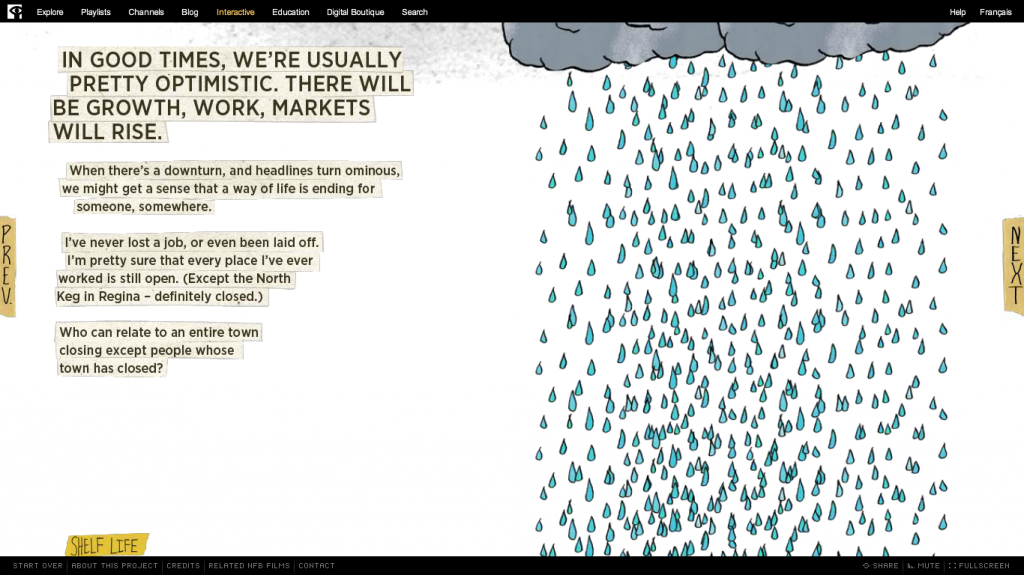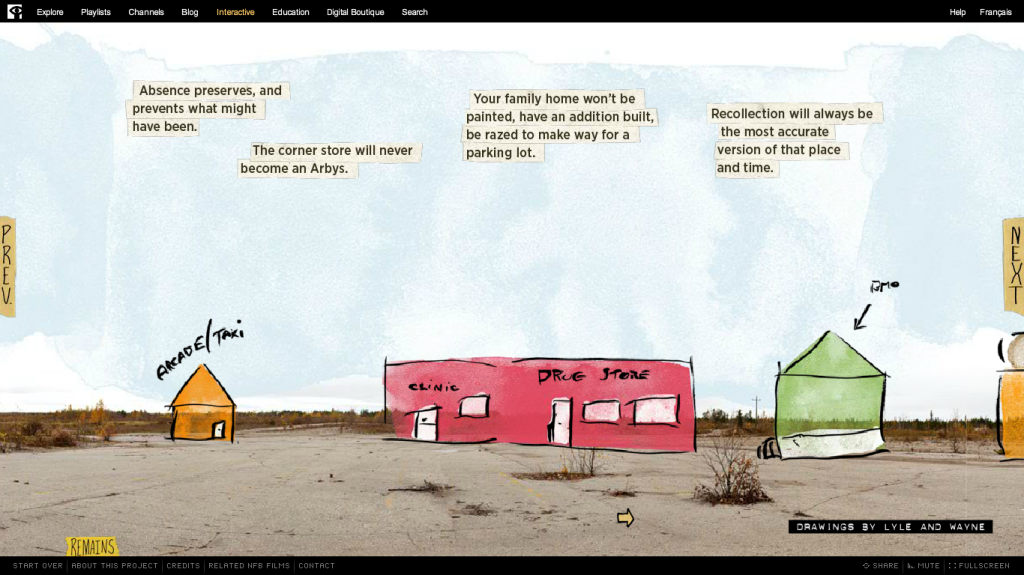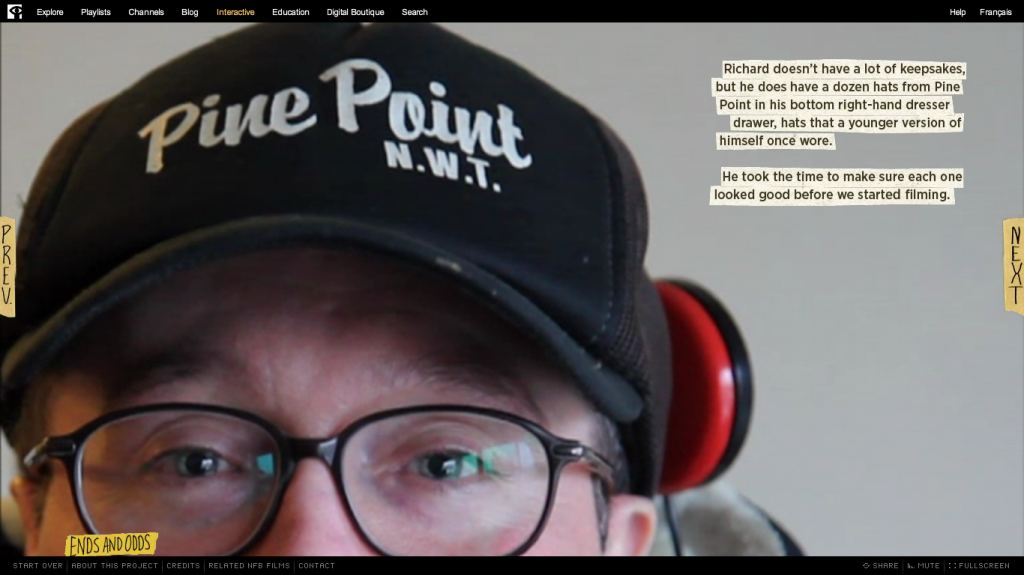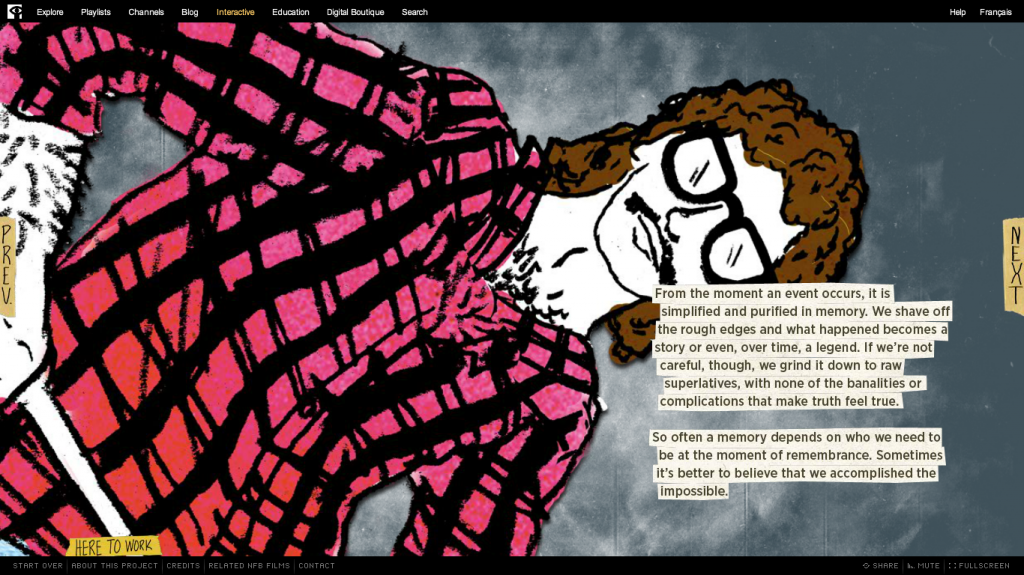I really enjoy the interactive stories from the National Film Board of Canada. I’ve analyzed many of them on this blog. Today I checked out Bread: A common story that connects us all. Here’s the description:
Artist and social innovator Mariette Sluyter’s Bread opens the oven door on the practice of baking bread and highlights the way it connects to our cultural emotional wellbeing. An experiment in human connectivity and interactive storytelling, Bread allows us to take a peek into the lives of six older women from very different backgrounds, all of whom share a passion for bread making.
Bread focuses on six different women who bake bread. You can watch a video of each of them baking bread and telling a brief (3-5 minute) story about their lives in voice-over. You can also read their bread recipes. So far, I’ve watched the videos and read the recipes for 3 out of the 6 women.
This project is very compelling. Both the theme and the structure of the project aren’t overly complicated. Full screen videos of six different women baking bread in their homes + voice-over narrations about their life. The main page is a grid of images of six kitchens. When you scroll over the kitchen, a picture of the woman who bakes in that kitchen appears. Click on her, and a full screen video of her baking starts playing. At the top of the video screen are links to the break recipe and “all stories.”
I like how the video combines silent footage of the women baking bread with background music and voice-over from a separate interview. As I write this last sentence I wonder, How does the choice to mute the kitchen scene, both the sounds of the baking and the women themselves, shape the story? How would we experience the story differently if we could hear those sounds? Does muting the actual noises of baking disconnect us from the physical process of making bread? Would it be possible to create a video project where you gave the audience the choice of hearing the kitchen noises…and maybe even some of the raw footage of the interview?










